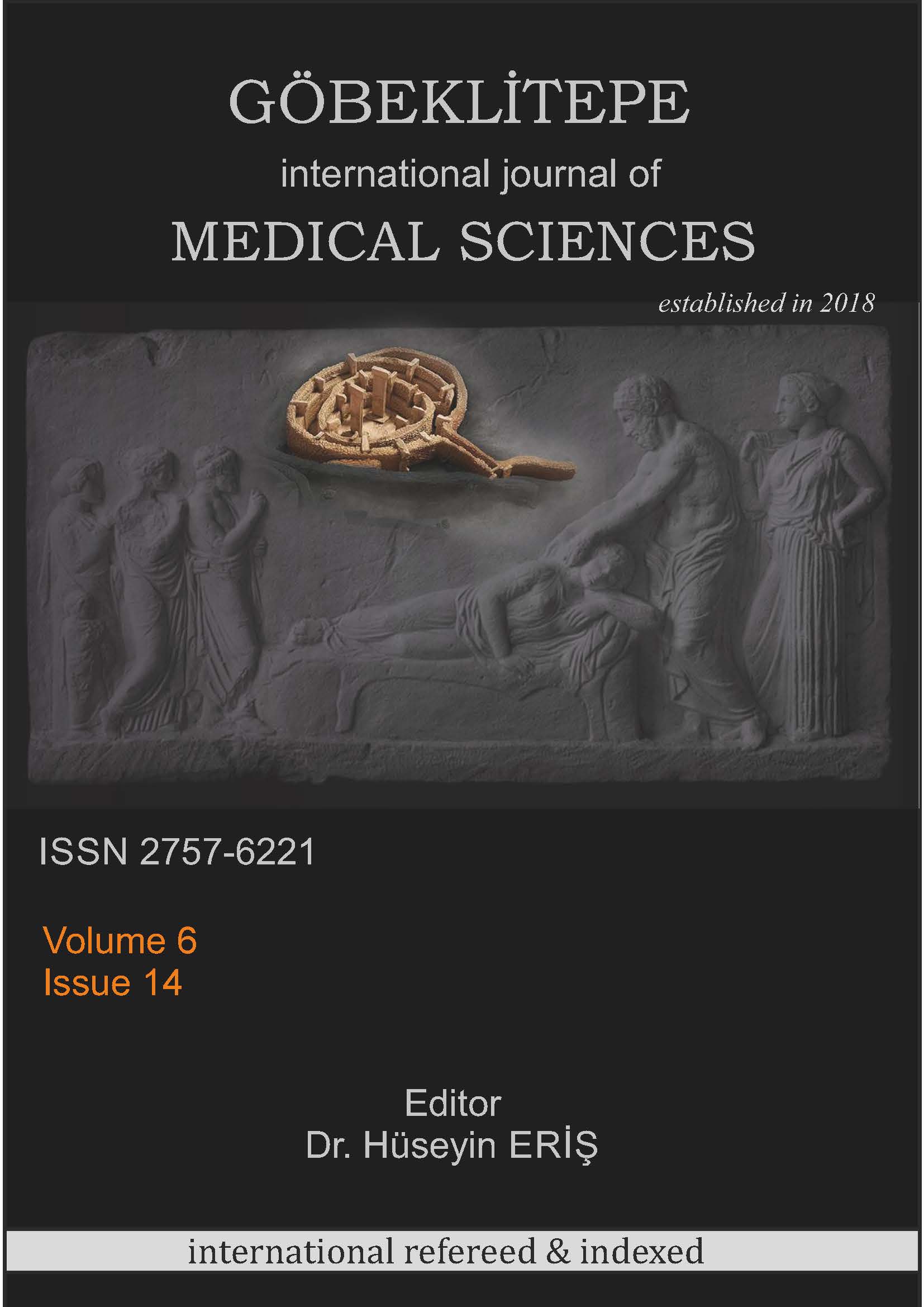Perceived Communication Barriers Between Nurses and Caregivers: Example of Pediatric Clinics
DOI:
https://doi.org/10.55433/gsbd.249Keywords:
Caregiver, Nurse, Communication Skills, Communication Barriers, PediatricsAbstract
This study aimed to determine the communication barriers perceived by nurses working in pediatric clinics and caregivers whose children are receiving inpatient treatment in these clinics. In the descriptive study conducted in a university hospital, the sample of the study consisted of 59 nurses and 203 caregivers. The data of the study was collected by face-to-face interview technique using the "Participant Questionnaire". The average age of the nurses participating in the study was 35.23+7.37, 93.2% were women, 61% were married, 76.3% had at least a bachelor's degree, 16.9% were not satisfied with working as a nurse, and 62.7% had poor communication skills during the education process. It was found that they received training and 27.1% thought they had difficulty communicating with caregivers. The average age of caregivers is 35.25+7.16, 83.7% are women, 57.2% are housewives, and 19.7% have difficulty communicating with nurses. It was determined that 96.6% of the nurses were working hard, 93.2% were tired, and 93.2% had difficulty communicating with caregivers due to the crowded and noisy environment. It was determined that 90.1% of the caregivers said that the nurses did not treat them with a friendly attitude, and 86.7% of them had difficulty in communicating because they did not show enough interest. A statistically significant difference was found between the nurses' gender, educational level, marital status and difficulty communicating with caregivers (p<0.05). As a result, it is recommended to increase the number of nurses working in clinics, regulate their working hours, and organize planned and regular training in the institutions where nurses work in order to improve their therapeutic communication skills.
References
- McCabe, C. (2004). Nurse–patient communication: an exploration of patients’ experiences. Journal of clinical nursing. 13(1),41-49.
- Ertem, M., Hamdiye, A., Baran, G., & Durgun, Y. (2007). Dicle Üniversitesi araştırma hastanesinde çalışan hekim ve hemşirelerin hasta iletişimi konusundaki görüşleri. Florence Nightingale Journal of Nursing. 15(59), 68-74.
- Mei, H. (2006). Causative analysis on nurse–patient disputes caused by communication disorder between nurses and patients. Chin. Nurs. Res. 20:2448–2449.
- Babadağlı, B., Erim, S. E., & Erdoğan, S. (2006). Hekimlerin ve hemşirelerin hastayla iletişim becerilerinin değerlendirilmesi. Fırat Sağlık Hizmetleri Dergisi. 1(3),52-69.
- Mok, E., & Chiu, P. C. (2004). Nurse-patient relationship in palliative care. Journal of Advanced Nursing. 48(5),475-483.
- Yates, P. M., Edwards, H. E., Nash, R. E., Walsh, A. M., Fentiman, B. J., Skerman, H. M., & Najman, J. M. (2002). Barriers to effective cancer pain management: a survey of hospitalized cancer patients in Australia. Journal of pain and symptom management. 23(5),393-405.
- Ailey, S. H., Johnson, T. J., Fogg, L., & Friese, T. R. (2015). Factors related to complications among adult patients with intellectual disabilities hospitalized at an academic medical center. Intellectual and Developmental Disabilities. 53(2), 114-119.
- Piquette, D., Reeves, S. ve LeBlanc, VR (2009). Stresli yoğun bakım ünitesi tıbbi krizleri: Bireysel tepkilerin ekip performansını nasıl etkilediği. Yoğun bakım tıbbı, 37 (4), 1251-1255.
- Li, H., Ang, E., & Hegney, D. (2012). Nurses' perceptions of the barriers in effective communicaton with impatientcancer adults in Singapore. Journal of Clinical Nursing. 2012;21(17-18), 2647-2658.
- Dede, M., & Çınar, S. (2008). Dahiliye yoğun bakım hemşirelerinin karşılaştıkları güçlükler ve iş doyumlarının belirlenmesi. Maltepe Üniversitesi Hemşirelik Bilim ve Sanatı Dergisi. 1(1), 3-14.
- Norouzinia, R., Aghabarari, M., Shiri, M., Karimi, M. ve Samami, E. (2016). Communication Barriers Perceived by Nurses and Patients. Glob J Health Sci. 2015 Sep 28;8(6), 65-74.
- Abudari, G., Hazeim, H., & Ginete, G. (2016). Caring for terminally ill Muslim patients: Lived experiences of non-Muslim nurses. Palliative & supportive care, 14(6), 599-611.
- Amoah, K. M. V., Anokye, R., Boakye, S. D., Acheampong, E., Budu-Ainooson, A., Okyere, E., Kumi-Boateng, G., Yeboah, C., & Afriyie, O. J. (2016). A qualitative assessment of perceived barriers to effective therapeutic communication between nurses and patients. BMC Nurs. 18(4), 1–8.
- Loghmani, L., Borhani, F., & Abbaszadeh, A. (2014). Factors affecting the nurse-patients' family communication in intensive care unit of kerman: a qualitative study. J Caring Sci. 3(1), 67-82.
- Ddumba-Nyanzi, I., Kaawa-Mafigiri, D., & Johannessen, H. (2016). Barriers to communication between HIV care providers (HCPs) and women living with HIV about child bearing: A qualitative study. Patient Education and Counseling. 99(5), 754-759.
- Al-Kalaldeh, M., Amro, N., Qtait, M., & Alwawi, A. (2022). Barriers to effective nurse-patient communication in the emergency department. Emergency Nurse, 30(5).
- O'Malley, P., Favaloro, R., Anderson, B., Anderson, M. L., Siewe, S., & Benson-Landau, M. (1991). Critical care nurse perceptions of family needs. Heart Lung. 20(2):189-201.
- Kwame, A., & Petrucka, P. M. (2021). A literature-based study of patient-centered care and communication in nurse-patient interactions: barriers, facilitators, and the way forward. BMC nursing. 20(1), 1-10.
- Park, E. K., & Song, M. (2005). Communication barriers perceived by older patients and nurses. International Journal of Nursing Studies. 42(2), 159-166.
- Maame Kissiwaa Amoah, V., Anokye, R., Boakye, D. S., & Gyamfi, N. (2018). Perceived barriers to effective therapeutic communication among nurses and patients at Kumasi South Hospital. Cogent Medicine, 5(1), 1459341.
- Williams, A. M., & Irurita, V. F. (2004). Therapeutic and non‐therapeutic interpersonal interactions: the patient's perspective. Journal of Clinical Nursing. 13(7), 806-815.
- Pytel, C., Fielden, N. M., Meyer, K. H., & Albert, N. (2009). Nurse-patient/visitor communication in the emergency department. Journal of emergency nursing, 35(5), 406-411.
- Bowles, N., Mackintosh, C., & Torn, A. (2001). Nurses’ communication skills: an evaluation of the impact of solution‐focused communication training. Journal of Advanced Nursing. 36(3), 347-354.
Downloads
Published
How to Cite
Issue
Section
License
Copyright (c) 2024 Göbeklitepe Sağlık Bilimleri Dergisi

This work is licensed under a Creative Commons Attribution 4.0 International License.




